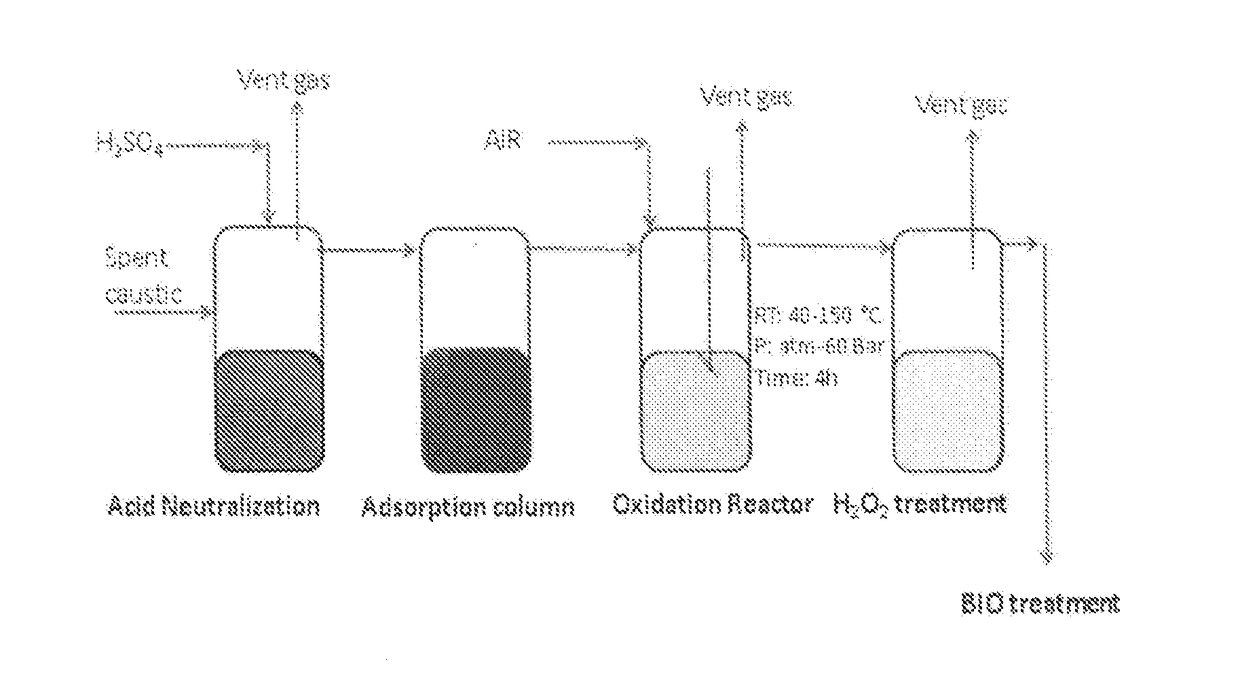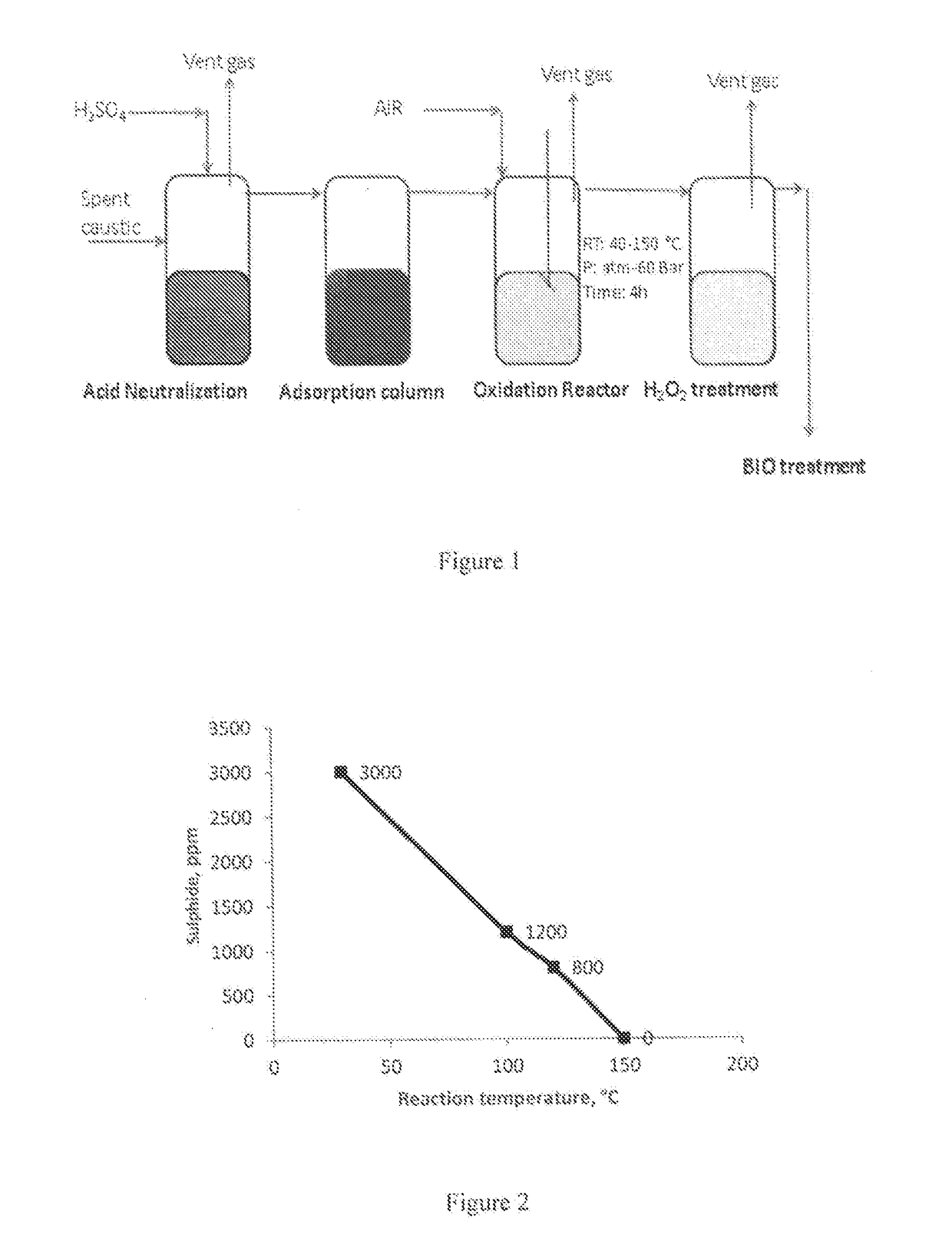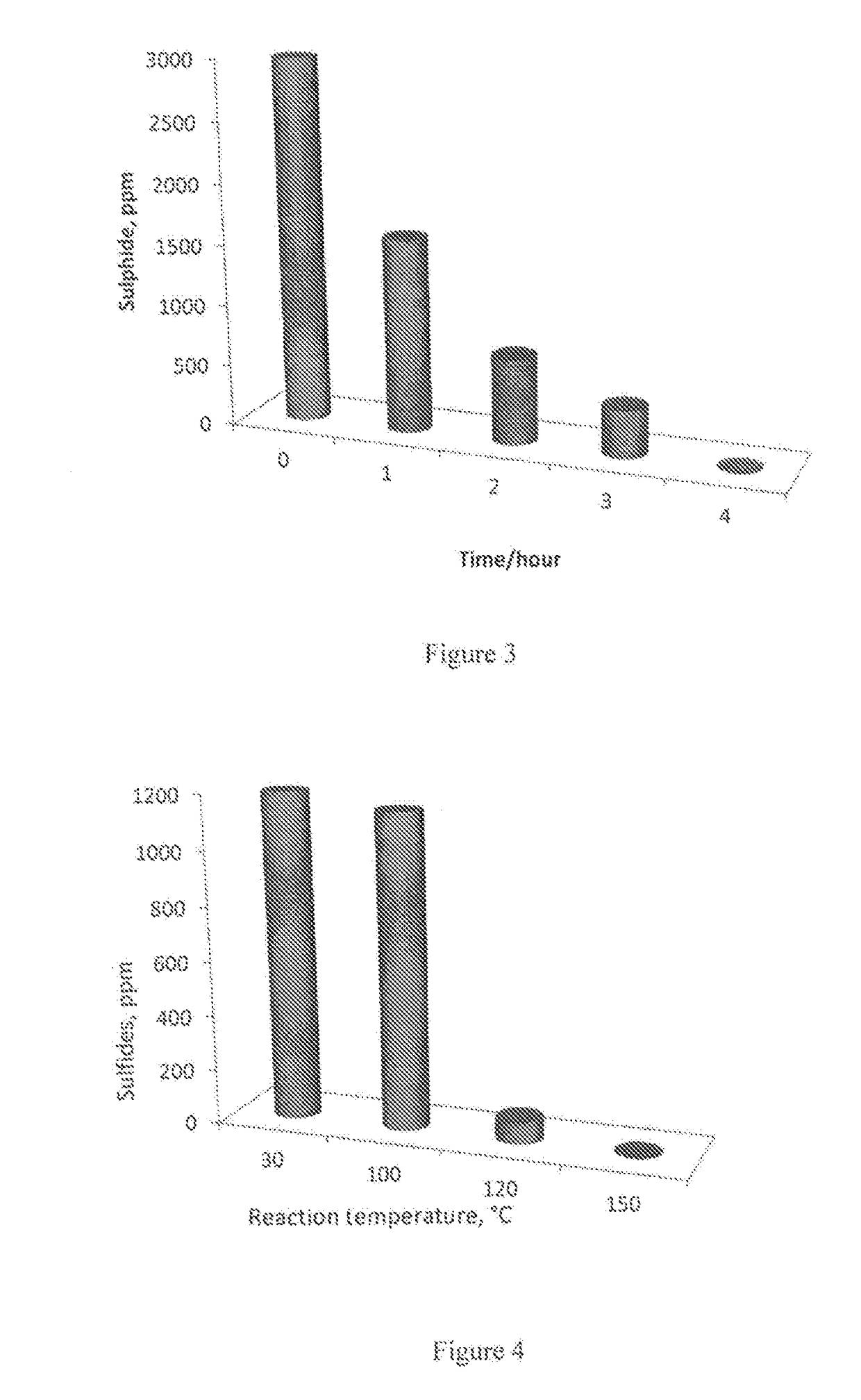Removal of Sulfides in Spent Caustic Stream over Active Solid Phase Catalysts
- Summary
- Abstract
- Description
- Claims
- Application Information
AI Technical Summary
Benefits of technology
Problems solved by technology
Method used
Image
Examples
example 1
[0053]The refinery spent caustic feed without any pretreatment with sulfidic content of 3140 ppm is used for the experiment to remove sulfides. The reaction conditions are as follows: spent caustic: 50 ml, Catalyst: Co—X zeolite and CoCaHAP, amount of catalyst: 50 mg, Oxidant: zero air, Temperature: 80° C. The results of various catalysts evaluated for removing sulfides has been presented in the Table 1. A maximum 58% conversion is achieved over Co—X zeolite using 50 mg catalyst at reaction temperature of 80° C. at atmospheric pressure.
TABLE 1Reaction Amount of temperature,catalyst,% SCatalyst° C.mgremovalCo—X805058Co—X605023CoCaHAP502010CoCaHAP605025CoCaHAP805042Co—NaX805054Co—SrX805059
example 2
[0054]In order to study the effect of high temperature and pressure sulphides removal is conducted at 80 to 100° C. at 10 bar zero air pressure. The results are presented in the Table 2.
TABLE 2SpentAirCausticCatalyst,TemperaturePressureSulfides(mL)Catalystmg(° C.)(bar)Conversion30Co—X50801061.2530Co—X501001076.2530Co—X501201092.530Co—X501201091.2530Co—X1001201068.75
example 3
[0055]The refinery spent caustic feed without any pretreatment with sulfidic content of 3140 ppm is used for the removal sulfides. The reaction conditions are as follows: spent caustic: 50 ml, amount of catalyst: 10-1000 mg, oxidant: zero air, Reaction temperature: 50-150° C., pressure atomspheric to 60 bars. The results of various catalysts evaluated for removing sulfides has been presented in the Table 3. A maximum 92% conversion is achieved over Co-CaHAP zeolite using 100 mg catalyst at reaction temperature of 150° C. at 60 bar pressure. The gas products were analyzed using the RGA and no significant amounts of H2S, SO2, and SO3 were observed.
TABLE 3Spent SulphideCatalyst,caustic,Pressure,Temperature,ConversionCatalystsmgmlbar° C.%Co—X100256012066Co—X100253012043Co—X100251512037Co—CaHAp100256015094Co—CaHAp100253015066Co—CaHAp100251515057Cu—X100256015070Cu—X100253015057Cu—X100251515043—256015031—253015014—251512013
PUM
| Property | Measurement | Unit |
|---|---|---|
| Temperature | aaaaa | aaaaa |
| Temperature | aaaaa | aaaaa |
| Fraction | aaaaa | aaaaa |
Abstract
Description
Claims
Application Information
 Login to View More
Login to View More - R&D
- Intellectual Property
- Life Sciences
- Materials
- Tech Scout
- Unparalleled Data Quality
- Higher Quality Content
- 60% Fewer Hallucinations
Browse by: Latest US Patents, China's latest patents, Technical Efficacy Thesaurus, Application Domain, Technology Topic, Popular Technical Reports.
© 2025 PatSnap. All rights reserved.Legal|Privacy policy|Modern Slavery Act Transparency Statement|Sitemap|About US| Contact US: help@patsnap.com



